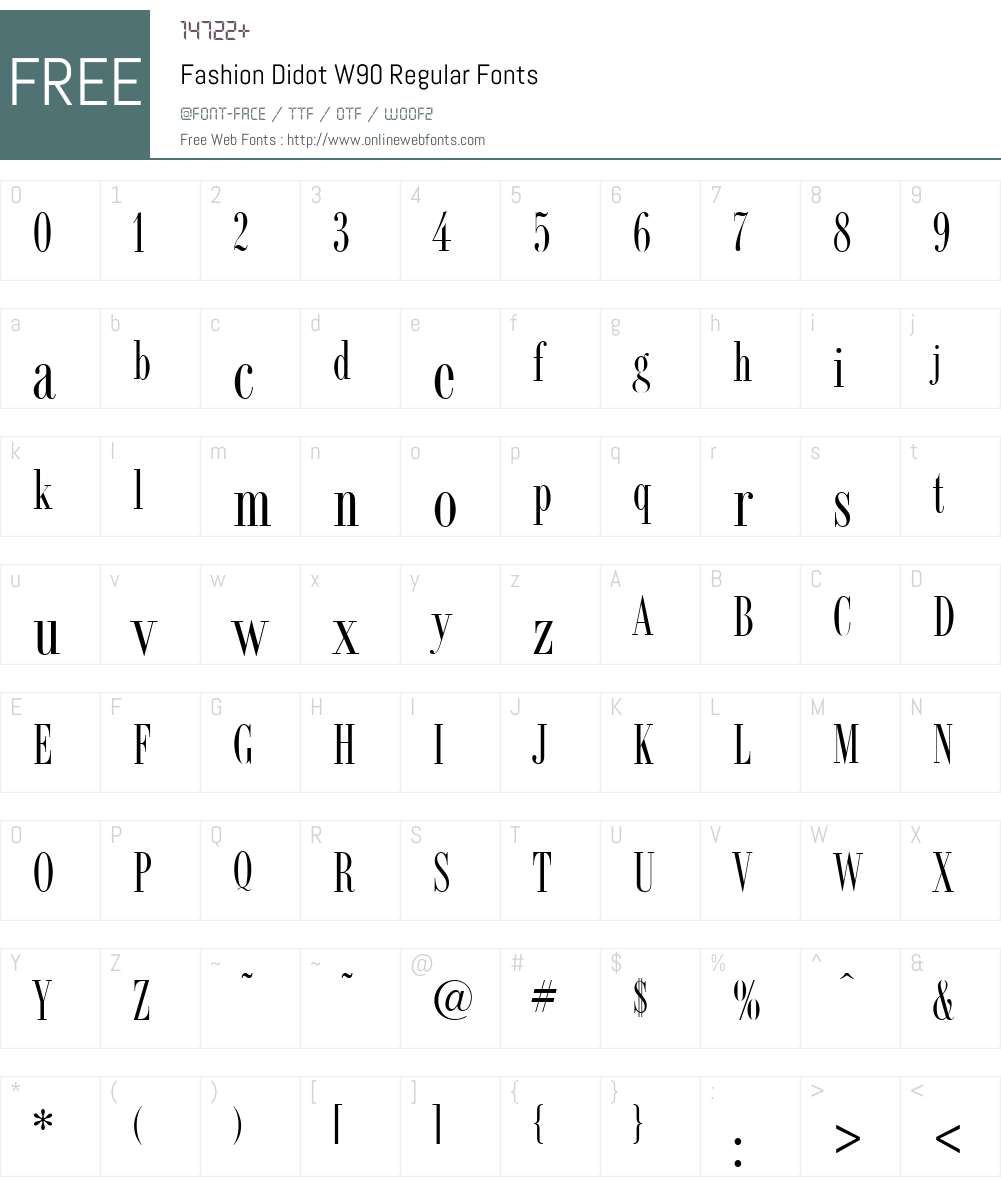

These qualities limit its use as a text face, making it more suitable for short passages than extended bodies of continuous text. the high contrast and fine hairlines require high-quality printing and a well-considered choice of paper. Linotype Didot has a broad form, very high contrast, and a combination of bracketed and hairline serifs. Less robust than Bodoni, Linotype Didot is an elegant face in which the decorative features of the Didone genre can be seen to best advantage. It retained all of the features that make Didot types ideal for book work and other text use. In 1992, Adrian Frutiger designed Linotype Didot.

Overall, Didot gives text a classic and elegant feel. As happens with older, successful typefaces, Didot has been redrawn many times, weathering the process of reinterpretation and new technologies. These changes personified the beginning of the modern style, and Didot became the French standard for over a century. The Didot typeface personifies the neoclassical motif that permeated French culture from pre-revolutionary days through the age of Napoleon. Didot type diverged with previous typefaces by abandoning these hand penned styles in favor of a cleaner, more precise vertical stroke, extremely then hairlines and strict horizontal serifs with almost no bracketing. While designing Didot, Firmin Didot moved away from the handlettering and calligraphic characteristics of the era in search of a cleaner and more legible solution. Improvements in presses and papers allowed printers to get clearer type and the Didot typeface was reworked until it aquired the rigid, finelined serif we recognize today as modern roman letterforms. As a consequence, they are frequently used to denote values of exclusivity and sophistication.ĭidot was introduced by the Didot type foundry in 1784. The effective use of Didone typefaces depends upon high-quality printing and paper, and serves in turn to demonstrate that quality. At smaller sizes, the delicate hairlines can break up when printed on inferior papers, or fill in when reversed out of solids. While these characteristics are moderated in the smaller sizes to allow for their use in text setting, the extremes of contrast impair readability, making them a less practical choice where large amounts of copy are to be set. Didones are most commonly used for display and semi-display purposes, where the accentuated contrasts or stroke width create dynamic and elegant graphic effects. In the eighteenth century improvements in paper quality combined with more advanced printing methods brought about changes in how typefaces were created. Common examples include Bodoni, Didot, and Computer Modern. Most modern fonts are less readable than transitional or old style serif typefaces. Serifs tend to be very thin and vertical lines are very heavy. Modern typefaces have a vertical stress, long and fine serifs, with minimal brackets. It’s best to keep them for headings and sub-headings. When used for body copy in print, an effect called “dazzling” occurs, the thick lines become very prominent while the thin lines almost disappear. They are not suitable for large amounts of body text, either on the web or in print. Having said that, modern fonts can look really eye-catching and very elegant at large sizes. Modern typefaces tend to look very structured and could be considered cold. Modern or Didone serif typefaces, which first emerged in the late 18th century, are characterized by extreme contrast between thick and thin lines. The family achieved Neoclassical ideals in their work. Books designed by the Didots have minimal decoration, generous margins, and simple linear borders. Pierre published acclaimed editions of French and Latin classics, and Firmin designed the Didot typeface.

His sons Pierre and Firmin took charge of printing and typefounding. François-Ambroise changed the standard of type design by increasing the contrast between thick and thin letters. Under François's elder son, François-Ambroise, the Didot point system of 72 points to the French inch became the standard unit of type measurement, as it remains today. Francois Didot (1689-1757) established a print/type foundry and bookselling business in 1713. Each of the seven members of the Didot family was involved in various branches of the book trade in some way. Around 1800, the family owned the most important print shop and font foundry in France. They were printers, publishers, typeface designers, inventors and intellectuals. For about a hundred years, during the 18 th and 19 th centuries, the Didot family were active as designers.


 0 kommentar(er)
0 kommentar(er)
